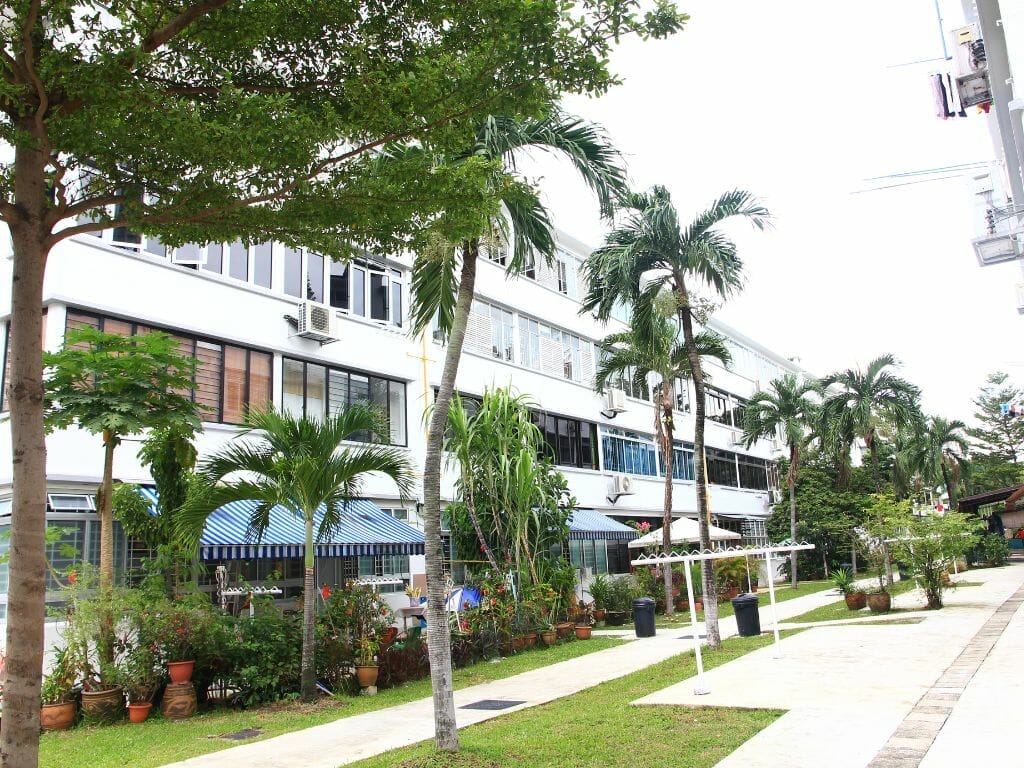Top 10 Things to See and Do at Tiong Bahru, Singapore
Tiong Bahru Road today stretches for more than three kilometres from Redhill MRT at its western end to Outram Road on its eastern end. For most Singaporeans, Tiong Bahru is a small, charming and chic housing estate awash with good eateries and eclectic little shops. But there is much more to Tiong Bahru than meets the eye. If you are visiting Singapore, and making a stop at the lovely Tiong Bahru estate, these are our top 10 recommended places to stop by for a visit.
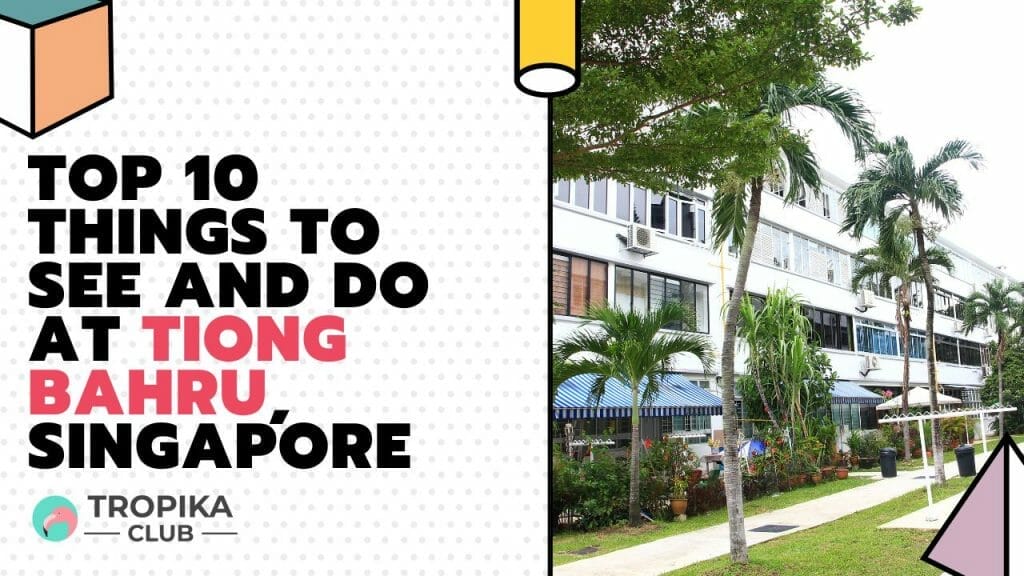
Table of Contents
- No Time to Read? Here’s a Snappy Summary of This Article
- #1 – Tiong Bahru Market and Food Centre
- #2 – Monkey God Temple
- #3 – Bird Corner & Former Hu Lu Temple
- #4 – PS.Cafe Petit at Tiong Bahru
- #5 – Seng Poh Garden & Dancing Girl Sculpture
- #6 – The Horse-Shoe Block
- #7 – Design of Tiong Bahru Flats
- #8 – The Outram Precinct
- #9 – Graves of Tan Tock Seng, Chua Seah Neo & Wuing Neo
- #10 – Tiong Bahru Community Centre
- Conclusion
- Frequently Asked Questions (FAQ)
- Have a Place to Recommend?
- Meanwhile, Check out Tropika Club’s Ecosystem of Websites
No Time to Read? Here’s a Snappy Summary of This Article
- Historic Architecture: Explore Art Deco buildings and pre-war shophouses for a glimpse into Singapore’s architectural history.
- Trendy Cafés: Discover hip cafes offering gourmet coffee, artisanal pastries, and Instagram-worthy interiors.
- Unique Boutiques: Shop at independent stores selling vintage clothing, handmade jewelry, and quirky home decor.
- Art Galleries: Visit art spaces showcasing local and international contemporary art.
- Local Hawker Food: Savor delicious hawker fare like Hainanese chicken rice and chwee kueh at Tiong Bahru Market.
- Charming Bookstores: Browse through charming bookstores with a curated selection of books, stationery, and gifts.
#1 – Tiong Bahru Market and Food Centre
Introduction: The Tiong Bahru Market and Food Centre is a bustling marketplace located in the heart of Singapore’s business district. It is home to a variety of stalls selling food, beverage, and household goods. The market also has a number of restaurants that serve a variety of dishes.
The popular Tiong Bahru Market opened in 1951 as Seng Poh Road Market. It was then just “a simple wooden structure with zinc pitched roof”. Named after the street commemorating Singapore’s first Chinese Municipal Commissioner, Tan Seng Poh, the market was built to house a large number of street hawkers who had served the rapidly growing community at Tiong Bahru. It became an instant draw for the residents, many of whom had relocated from Chinatown.
Location: 52 Tiong Bahru Rd, Singapore 168716
Opening Hours:
- Daily 7am-10pm
Price of Admission: No Entrance Fee
Contact: NIL
Website: Website Link Here
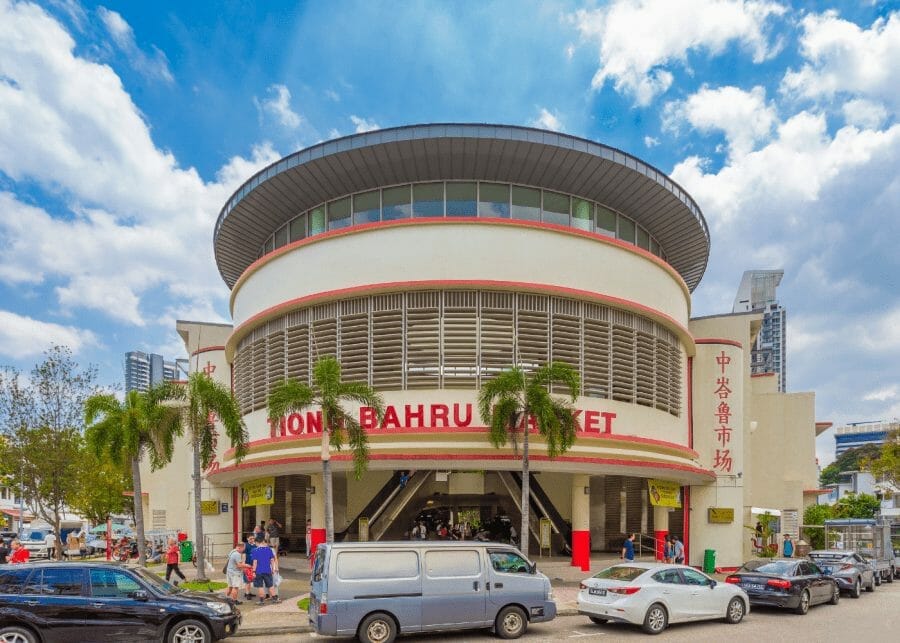
#2 – Monkey God Temple
Introduction: The Tiong Bahru Qi Tian Gong (齐天宫), more popularly known as the Tiong Bahru Monkey God Temple, was founded in 1920 in a small attap hut located within a taro garden just across Eng Hoon Street. It moved to its current location in 1938.
Initially, the temple operated from rented premises but in 1985, the trustees of the Temple acquired ownership of the shophouse and it underwent a major renovation in 1992-1993. The Temple is dedicated to Sun Wu Kong (孙悟空), the Monkey King from Wu Chen-en’s classic 16th century fable, Journey to the West. At this temple, you can see more than ten statues of the Monkey God, the oldest of which is almost a century old. The trustees of this Temple claim that this was the very first temple in Singapore dedicated to the worship of the Monkey God. There are currently over 40 other temples in Singapore where the Monkey God is worshipped.
The whole basis of monkey worship is found in the 100 chapters of Journey to the West where the monkey represents human caprice and genius. He claimed for himself the title Qitian Dasheng, meaning ‘Great Sage, equal of Heaven’, and ended up as a god in the classic tale. On the day of the Monkey God’s birthday, which takes place on the 16th day of the 8th lunar month, believers stream in for help and the ritual begins. Mediums go into a trance during which new idols, new altars and even new offices are blessed for luck. The medium is whipped, slashed with knives, pierced with lard-smeared spears and climbs ladders of swords to prove that his body has been “possessed” by the real Monkey God before dishing out his blessings. In full Monkey regalia, the medium begins swaying his head, twitching his fingers, and jerking his legs, all the while seated on his blood red ‘Dragon Chair’. Prayers and offerings are made to the gods, notably the Jade Emperor; and Kuan Yin (the Goddess of Mercy) who picked Monkey for the journey to the west and is the only deity able to control him. It is believed that the Monkey God is almighty, resourceful, mercurial, brave and vigorous and can tell between truth and falsehood easily.
Location: 44 Eng Hoon St, Singapore 169786
Opening Hours:
- Daily 7am-5pm
Price of Admission: No Entrance Fee
Contact: +65 6220 2469
Website: Website Link Here
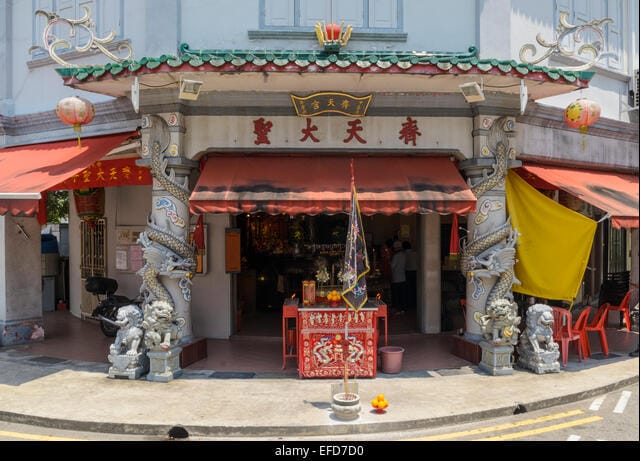
#3 – Bird Corner & Former Hu Lu Temple
Introduction: The junction of Seng Poh Road and Tiong Bahru Road was one of the most important crossroads in Tiong Bahru. This is where the main arterial road leading from Outram Road into the estate meets Tiong Bahru. This was also where many residents as well as visitors from other parts of Singapore used to gather, to perform religious rituals at a Chinese temple, check out the offerings at a nearby bird shop or enjoy a cup of coffee with friends while listening to the sweet melodies of their feathered companions.
Many locals would remember the site of this first marker as the location of a very popular bird corner. But the origin of this bird corner actually lies across the road, on a small plot of land now occupied by the Nostalgia Hotel where there used to be very popular pet bird shop. The owner of this shop hung many birdcages containing songbirds outside his premises and this myriad of sounds and colours attracted many tourists and curious onlookers, making the area very lively and crowded.
The hustle and bustle of the pet bird shop drew the notice of the owner of Wah Heng, a traditional coffee shop on the ground floor of the row of flats that now houses the Link Hotel. Sometime in the early 1980s, the owner of Wah Heng, seeing how the birdcages attracted high traffic across the road, erected a metal structure outside his coffeeshop to allow bird owners to hang their birdcages while they sipped coffee and chit-chatted nearby. This was an astute move as many bird owners made a beeline for the coffeeshop to show off their birds, and enjoy their calls and songs, while having coffee or snacks with friends at the same time. Before long, the sight of so many birdcages and the cacophony of birdsong drew much attention from locals and tourists who would congregate at the corner to soak in the atmosphere or just to gawk. The well-known American jazz flautist Herbie Mann (1930–2003) even made a special trip to this corner in 1984 to play his flute to the accompaniment of the birdsongs.
Location: 3 Seng Poh Rd, Singapore 168891
Price of Admission: No Entrance Fee
Contact: NIL
Website: Website Link Here

#4 – PS.Cafe Petit at Tiong Bahru
Introduction: You’ve probably had a cup of coffee from one of these Top Great Cafes in Tiong Bahru and Telok Blangah of Singapore. A cup of piping hot coffee always hits the spot, then why not take a stroll to the Tiong Bahru Market along Seng Poh Road for the best local delicacies to perk up your weekend. But we digress. Whether you’re on the lookout for the killer brunch menu or craving for European Cuisine, pop by these Top Great Cafes in Tiong Bahru and Telok Blangah of Singapore.
A unique outlet located in the trendy Tiong Bahru neighbourhood, PS.Cafe Petit is a quaint location inspired by the traditional French cafes of yesteryear. This outlet was also our first to feature artisanal pizzas and exceptional curated retail wines within its retail offering, which it still offers today. Visit PS.Cafe Petit if you’re looking for a venue that offers an extensive range of wines from across the world, freshly baked loaves of bread and cakes, as well as delicious takeaways.
Location: No. 41, Blk, 78 Guan Chuan St, 160078
Opening Hours:
- Weekdays :10am–10:30pm (Last order at 10.00 pm)
- Weekends : 9am–10:30pm (Last order at 10.00 pm)
Price of Admission: No Entrance Fee
Contact:
Phone number: (+65 6708 9288)
Islandwide Delivery: (https://order.pscafepetit.com/)
Deliveroo: (https://deliveroo.com.sg/menu/singapore/tiong-bahru/ps-cafe-petit-tiong-bahru)
Grab: (https://food.grab.com/sg/en/restaurant/ps-cafe-petit-tiong-bahru-delivery/SGDD07206)
Foodpanda: (https://www.foodpanda.sg/restaurant/v4es/ps-cafe-petit-tiong-bahru)
Website: Website Link Here
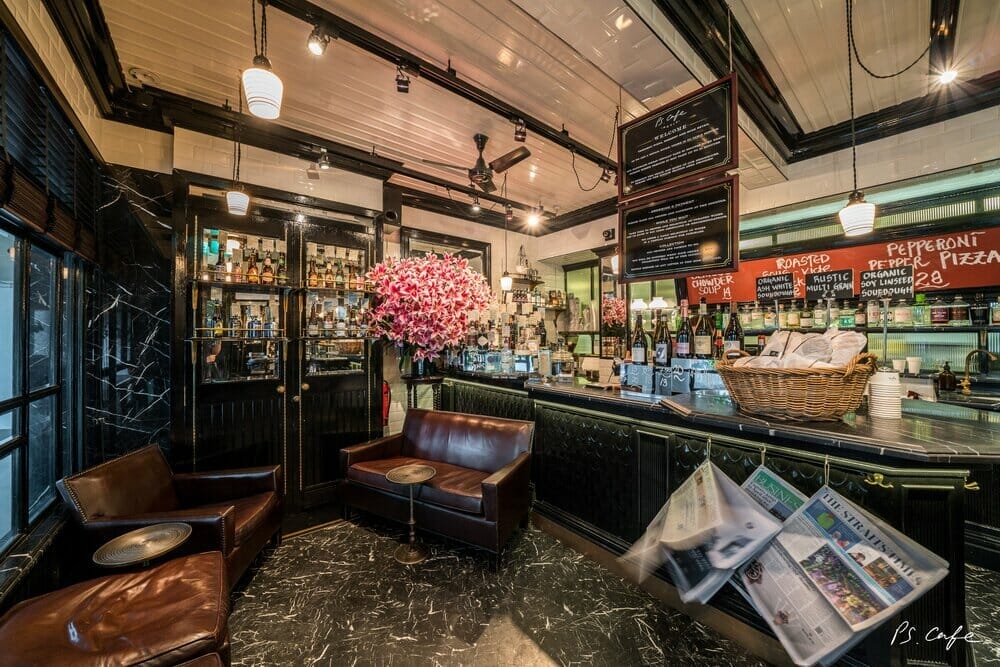
#5 – Seng Poh Garden & Dancing Girl Sculpture
Introduction: While Tiong Bahru was planned with plenty of green spaces between its blocks, there were no initial plans for a landscaped recreational garden. For a time, the area near the Community Centre at Eu Chin Street had, in the 1960s, been planted with various plants and shrubs in the manner of a garden, but it was only in 1972 that a landscaped garden at Seng Poh Road was planned.
The space where Seng Poh Garden is now located was an open grassy area which residents used for their morning exercise and gatherings. Returning to his old estate, Member of Parliament for Tiong Bahru and former resident Ch’ng Jit Koon (b. 1934) was anxious that the estate’s green spaces be given greater prominence. To this end, he asked Sarawak-born sculptor Lim Nang Seng (1916–1987) – who had already established himself as a leading sculptor in Singapore – to do something ‘as soon as possible’.
As Ch’ng’s commission was urgent, Lim chose an abstract form depicting a girl doing a sort of joyful harvest dance. He sculpted the 1.2-metre high sculpture in a car park in Orchard Road and finished it within two weeks. Made of concrete, the sculpture cost less than $2,000 at the time. The Dancing Girl sculpture was unveiled by then Minister for Interior and Defence Lim Kim San (1916–2006). The sculpture drew mixed reactions. Some residents loved it while others thought it too abstract, saying that it looked more like a swan about to take flight. Lim Nang Seng was not upset by these comments, saying that since swans were auspicious birds, it was fine if residents thought that it brought prosperity to the estate. The Garden underwent a $250,000 renovation lasting six months in 2007.
Location: 78 Guan Chuan St, Singapore 160078
Price of Admission: No Entrance Fee
Contact: NIL
Website: Website Link Here
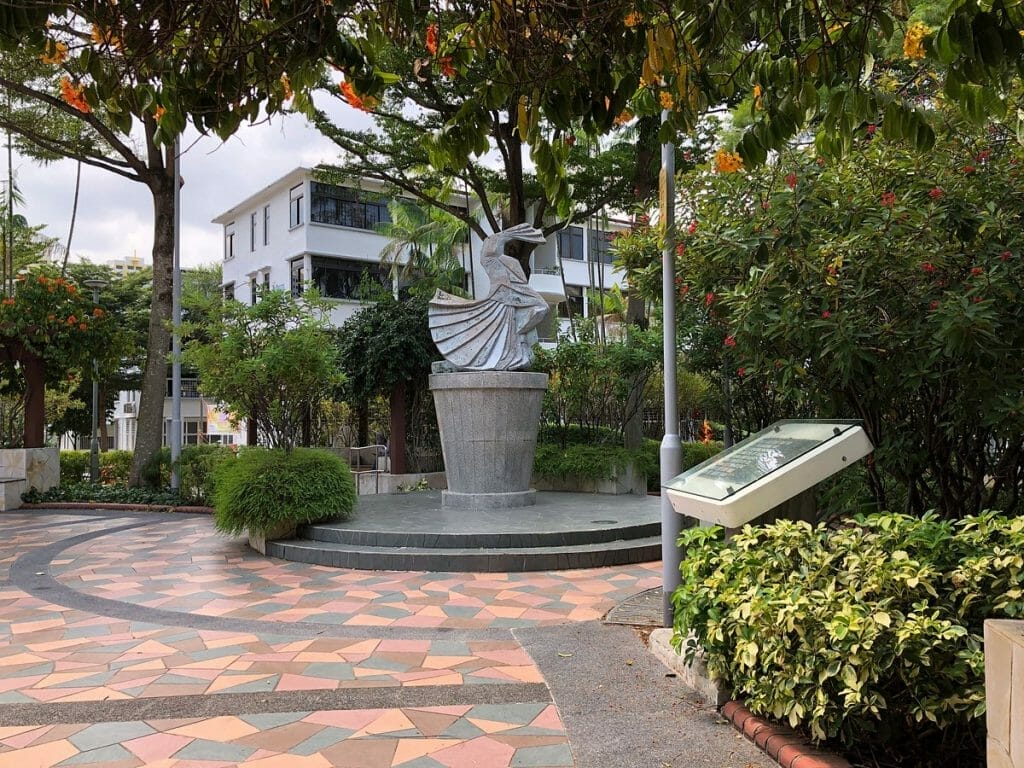
#6 – The Horse-Shoe Block
Introduction: These distinctive curved ‘horse-shoe’ shaped flats at Moh Guan Terrace and Guan Chuan Street were built between 1939 and 1940. Block 78 is the largest block of flats in Tiong Bahru and is unique for two reasons. First, this single block of flats actually straddles both Moh Guan Terrace and Guan Chuan Street; and second, the section on Guan Chuan Street features a purpose-built air raid shelter, the first to be included in a public housing project.
The earliest air raid shelters in Singapore were built sometime between 1936 and 1937 in Bukit Tunggal in Novena. At the time, there were no further plans to build more of such shelters because the outbreak of war in Singapore was considered a distant possibility. However, when war broke out in Europe in 1939, members of the public began urging the government to build more air raid shelters. The government was generally reluctant to do so because most of Singapore’s buildings were built on low flat land close to the water table. This meant that the building of underground bunkers and shelters would be difficult and expensive. The government then encouraged people to build their own air raid shelters and offered plans for such shelters. Commercial concerns like the Alexandra Brick Factory also advertised their products for use in such shelters.
On 28 June 1939, SIT announced that a new housing scheme at Guan Chuan Street would include ‘a basement floor’ that would be used as a covered play area, but which could, in times of emergency ‘readily be converted into an effective air raid shelter.’ This air raid shelter is significant because it is the only public housing building to have been built with the shelter as part of its design. According to Nicholas Tang (1939–2012) who lived in the Tiong Bahru estate as a child, the entrance to the shelter was located at 41 and 43 Guan Chuan Street, in front of a coffee shop then owned by a man named Yeo Swee Hong. Once an air raid siren was sounded, the two doors to the shelter would open and a ladder at each doorway led into the shelter.
Like many of the other blocks in Tiong Bahru, the ground floor of Block 78 is a mix of residences and shops. One of the oldest surviving coffee shops in Tiong Bahru, Hua Bee, is located at the base of the block where Moh Guan Terrace meets Guan Chuan Street. This coffee shop was started sometime in the 1940s and was established by the uncle of its current operator, Tony Tiang, who now runs the coffee shop on behalf of his cousin who inherited the premises from his father. As far as Tiang can remember, the coffee shop only served drinks, bread, eggs and fishball noodles. It is one of the few remaining coffeeshops in Singapore that still serves coffee with a slice of butter in the cup. The fishball stall owner is called Ong Ngah (Hokkien for ‘baby’). The noodle stall has been in operation since the 1960s. This coffeeshop was the set for Eric Khoo’s 1995 movie, Mee Pok Man.
Location: Block 78 Tiong Bahru
Price of Admission: No Entrance Fee
Contact: NIL
Website: Website Link Here

_
Read Also:
Top Great Cafes in Tiong Bahru and Telok Blangah of Singapore
#7 – Design of Tiong Bahru Flats
Introduction: After the Second World War, SIT built several blocks of four-storey flats between 1948 and 1954, which can be seen around Lim Liak Road and along Seng Poh Road northwards toward Tiong Bahru Road and Boon Tiong Road. The design of these post-war flats in Tiong Bahru was done by SIT’s Senior Architect Lincoln Page and Robert FN Kan, the first locally-born person to be appointed assistant architect and town planner in SIT. Page and Kan favoured the International Style of design which was inspired by mechanical simplicity and structure. One important characteristic of the International Style is the use of boxes to carve out the interior space of the building. Lines are clean and simple, giving the building a modern yet functional look.
The International Style emerged in the 1920s as a reaction against historicism (a theory that each period of history has its own unique beliefs and values and can only be understood in its historical context) and the ostentatious decorative aspects of the Art Deco movement. Among its leading practitioners were Le Corbusier (1887–1965), Ludwig Mies van der Rohe (1886–1969) and Walter Gropius (1883–1969). Like the pre-war Streamline Moderne, practitioners of the International Style adopted a machine aesthetic, which emphasised abstract, undecorated surfaces reminiscent of machines, and the edict that form follows function. Their designs, which favoured heavy use of concrete, steel and glass, were boxier than the pre-war flats and presented a stark, almost austere, aesthetic that critics have labelled as ‘ugly’, ‘sterile’ and even ‘inhuman’. However, Page and Kan avoided a completely boxed design for these blocks by infusing the external staircases with luscious curved landings and round portholes, reminiscent of the older flats in the estate.
Although the SIT architects were deeply influenced by Western architectural styles like Streamline Moderne and the International Style, they were also very sensitive to local conditions and modified their designs accordingly. For a start, the architects were very aware that they were designing flats for the tropics where intense heat and tropical rainstorms are common hazards. Taking a leaf from the highly successful shophouse style, the SIT architects retained several familiar features in their modernist designs. Some of these architectural elements were five-foot ways, back lanes, the shophouse, spiral staircases and the kitchen airwell.
Location: Tiong Bahru
Price of Admission: No Entrance Fee
Contact: NIL
Website: Website Link Here
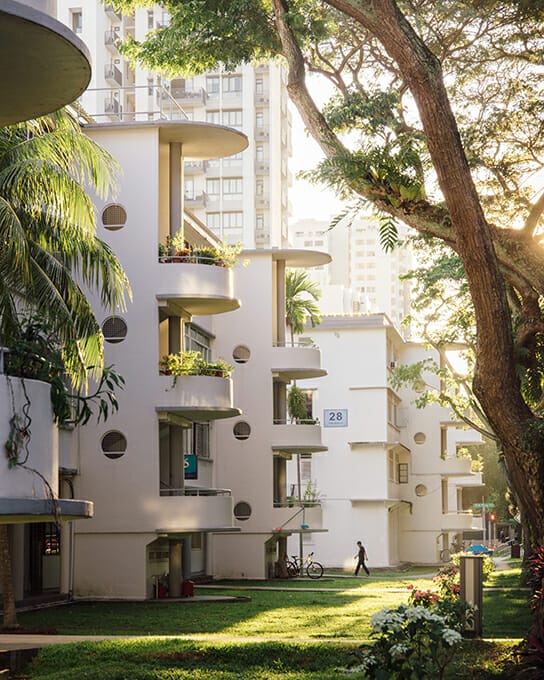
#8 – The Outram Precinct
Introduction: Early geographers and town planners of Singapore saw the Singapore River as a valley between two high points: Fort Canning and Pearl’s Hill, and thus named two roads on either bank of the river, River Valley Road. Naturally, this proved rather confusing. In 1858, the Municipal Commission decided to rename the former River Valley Road that leads towards New Bridge Road by the foot of Pearl’s Hill. Specifically, the stretch from the junction of Kim Seng Road towards Upper Cross Street was renamed Havelock Road, while the stretch from the junction of Kim Seng Road to New Bridge Road was renamed Outram Road. This was done to honour the two British heroes of the Indian Mutiny: Lieutenant-General James Outram (1803–1863) and Lieutenant-General Henry Havelock (1795–1857), who had put down the Indian Mutiny the year before.
This hilly area near the junction of Jalan Bukit Merah and Outram Road had long been a military area. It was first settled when the 35th Regiment of the Madras Native Infantry built their barracks at this junction in 1827. Members of this regiment were Sepoys – Indian soldiers employed by the East India Company – and the area became known as Sepoy Lines. The Sepoys occupied this area till the 1860s when they moved to Tanglin Barracks where the Dempsey Road and Dempsey Hill eateries are now located. In 1873, the Singapore General Hospital relocated to Sepoy Lines. As the Sepoys had by this time relocated to Tanglin Barracks and to Fort Canning, the hospital was able to use the buildings that previously housed the troops.
Location: Outram Rd
Price of Admission: No Entrance Fee
Contact: NIL
Website: Website Link Here

#9 – Graves of Tan Tock Seng, Chua Seah Neo & Wuing Neo
Introduction: Tan Tock Seng (陈笃生) was one of Singapore’s most important early pioneers. Born in 1798 in Malacca, he moved to Singapore in 1819 at the age of 21, shortly after the British arrived. Starting out by selling fruits, vegetables and poultry, he soon put together enough capital to set up a shop at Boat Quay. Tan, who was Hokkien, learnt to speak English and got on well with the European traders. He entered into a partnership with John Horrocks Whitehead (1810–1846), a prominent trader from the firm of Shaw, Whitehead & Co, and it was largely due to their joint speculation in land that Tan became immensely wealthy.
Tan owned large tracts of land, including more than 20 hectares at the site of the former Tanjong Pagar Railway Station. He also owned another plot of land that stretched from Connaught Drive to High Street and up to Tank Road. Tan and his brother Tan Oo Long also owned a nutmeg plantation. Tan’s close connections with the local community made him a natural leader and his tact and ability to resolve disputes among the Chinese endeared him to the British.
In 1844, seeing the plight of the locals on the island, Tan contributed $5,000 towards the construction of a Chinese Pauper’s Hospital on top of Pearl’s Hill which was to take care of the ‘diseased of all nations’. Construction of the hospital took three years but after it was completed, it stood empty for two more years due to a lack of funds to equip the hospital and employ staff. In 1849, the first patients were admitted to the hospital. The hospital moved to premises located at the junction of Serangoon Road and Balestier Road in 1861. In 1903, this tract of land was acquired and the hospital moved yet again, to its current location off Moulmein Road.
Tan Tock Seng died in 1850 and was buried in an unknown location. Indeed, a newspaper report documenting his funeral simply stated that his cortege journeyed to a ‘burial place’. Tan Tock Seng was survived by his wife Lee Seo Neo (1807–1877).
The land where the tombs are now located was acquired by Tan Tock Seng’s son, Tan Kim Ching (1829 – 1892), in 1877, and this is where the younger Tan chose to bury his wife, Chua Seah Neo, when she died in 1882. It was quite possible that at this time, Kim Ching made the decision to exhume his father’s remains and re-inter them at the same Outram Road site, right next to his own wife’s tomb. In 1969, the tombs were threatened with exhumation when the government widened Outram Road to cope with increased traffic. Appeals from Tan Tock Seng’s descendants to safeguard the tombs were successful. But in the 1980s, the tombs were forgotten, until they were ‘rediscovered’ in 1989. Since then, descendants of Tan Tock Seng have been tending to the tomb and a major sprucing up of the site was carried out in 2009.
Location: 254 Outram Rd, Singapore 169051
Opening Hours:
- Open 24 hours
Price of Admission: No Entrance Fee
Contact: NIL
Website: Website Link Here

#10 – Tiong Bahru Community Centre
Introduction: The idea of setting up a organisation to organise activities for the community emerged among Tiong Bahru’s residents shortly after the war. In July 1948, Lau Yew Hock, a prominent member of the Tiong Bahru community and Secretary of the Singapore Chinese Importers and Exporters Association, proposed the establishment of a community centre. The Singapore Free Press reported on 26 July 1948 that at a meeting held at the Outram Road Church Hall, residents unanimously resolved that “a community centre is most desirable to further the moral, cultural, physical and advancement of the residents of Tiong Bahru”.
An Interim Working Committee was formed and a month later, a blueprint for “a system of local self-government for a mixed community” was prepared for the approval of the residents of Tiong Bahru SIT Estate. Among other things, the Tiong Bahru Community Centre was to be established to “train its members to be useful and responsible citizens by: (a) promoting friendship among themselves, irrespective of race or creed; (b) promoting the physical, intellectual, social and moral development of its members; and (c) teaching or interesting its members in the pursuit of some vocation.”
However, these plans did not take off until a few years later. In July 1951, a community centre building was established at Eu Chin Street at the cost of $20,000 and was officially opened by Duncan Robertson. The Community Centre proved very popular and within six weeks of its opening, 13,000 members had signed up. The Centre was very active, organising regular film shows, weekend dances and entertainment for its members and residents.
Did you know?
The original Tiong Bahru Community Centre at Eu Chin Street in 1951 was in fact a converted stand-alone air-raid shelter. It is still there today.
Location: 67A Eu Chin St, Singapore 169715
Opening Hours:
- Daily 10am–6pm
Price of Admission: No Entrance Fee
Contact: +65 6223 0748
Website: Website Link Here
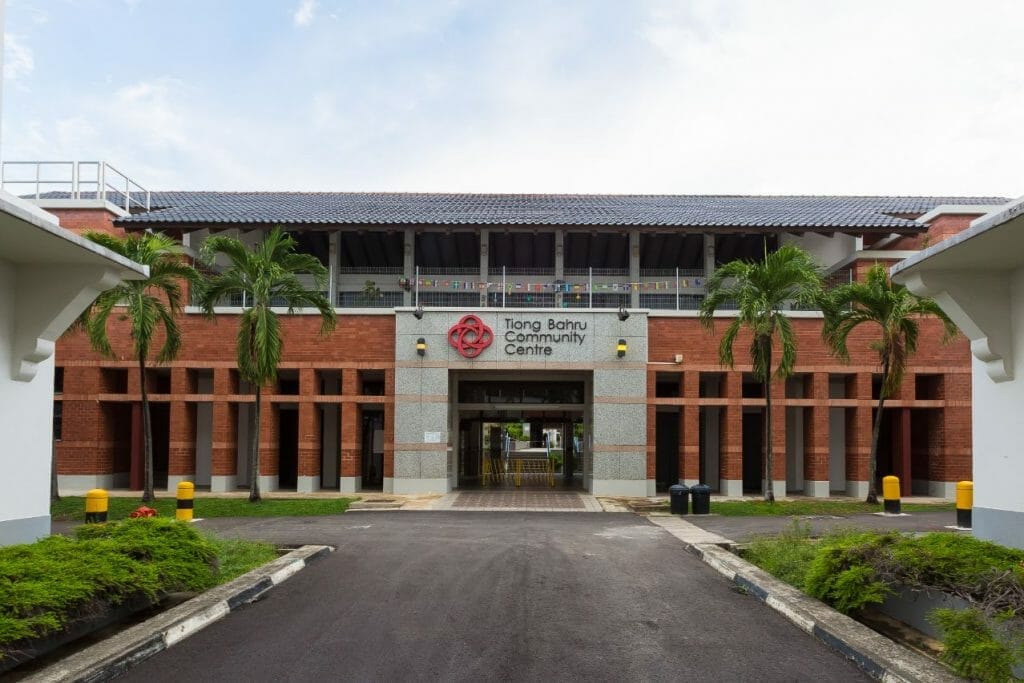
Conclusion
As the editor of Tropika Club Magazine, I’ve had the chance to explore Tiong Bahru and see why it’s a favorite among locals and tourists alike. This charming neighborhood offers a unique blend of old and new, making it a must-visit spot in Singapore. From its historic architecture and trendy cafés to unique boutiques and vibrant art galleries, there’s something for everyone. The local hawker food at Tiong Bahru Market is a culinary delight, offering authentic tastes of Singapore. Charming bookstores add to the area’s appeal, providing a cozy retreat for book lovers. Tiong Bahru’s mix of culture, cuisine, and creativity ensures you’ll leave with memorable experiences and a deeper appreciation of Singapore’s vibrant heritage. Whether you’re a first-time visitor or a regular, Tiong Bahru always has something new to discover.
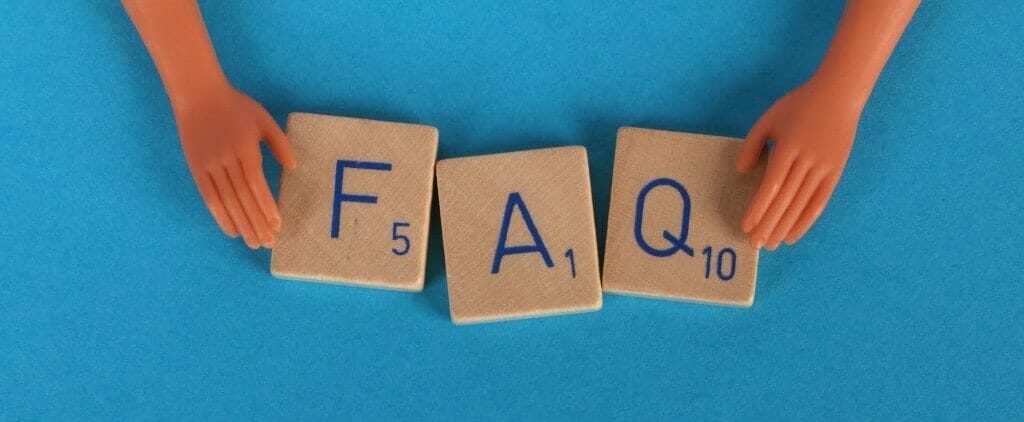
Frequently Asked Questions (FAQ)
Q:. What is Tiong Bahru known for?
A : Tiong Bahru is known for its unique blend of historic architecture, trendy cafes, and vibrant art scene.
Q :. Are there any famous cafes in Tiong Bahru?
A : Yes, Tiong Bahru is home to several famous cafes like Tiong Bahru Bakery and Forty Hands.
Q : What kind of food can I find at Tiong Bahru Market?
A : You can find a variety of local hawker food at Tiong Bahru Market, including Hainanese chicken rice and chwee kueh.
Q : . Are there any cultural spots to visit in Tiong Bahru?
A : Yes, Tiong Bahru features several cultural spots, including art galleries and heritage buildings.
Q : . Can I find bookstores in Tiong Bahru?
A : Yes, Tiong Bahru has charming bookstores like BooksActually, known for its curated selection of books and stationery.
Q : . How can I get to Tiong Bahru?
A : Tiong Bahru is accessible by MRT, with Tiong Bahru MRT station on the East-West Line being the closest stop.
For more detailed information, check out our full guide on the top things to do in Tiong Bahru, Singapore.

Have a Place to Recommend?
Your contribution is valuable to us! Are there any outstanding businesses that you believe should be added to our list? If so, please send your recommendations to us at [email protected]. Tropika Club will review your suggestions and update the list accordingly. Thank you for your help in making our list of businesses as comprehensive and accurate as possible.
Meanwhile, Check out Tropika Club’s Ecosystem of Websites
Tropika Club Magazine – Tropika Club Magazine is a Singapore-based publication that features articles on a wide range of topics with a focus on local businesses and content for the region. The magazine emphasizes supporting local businesses through its #SupportLocal initiative, which includes coverage of everything from neighborhood hawker stalls to aesthetic clinics in town. In addition to highlighting local businesses, Tropika Club Magazine also covers a variety of local content, including beauty, lifestyle, places, eats, and what’s on in Singapore and the Asia Pacific region.
Tropika Club Deals – Tropika Club Deals is a leading online deals and voucher shopping site in Singapore, offering amazing discounts on beauty, wellness, and fitness products and services. It’s the perfect platform for customers who want to discover the best deals without having to commit to a specific appointment date and time. These deals are available at major beauty stores, facial salons, hair salons, and other brands in Singapore, with no minimum spend required. Choose from guaranteed discounted deals in the categories of hairstyling, hair removal, facial & aesthetics, body slimming, brows & lashes, nails & makeup, massage & spa or fitness & wellness. Tropika Club Deals is also ideal for customers who want to buy vouchers as gifts or to use for the future. So whether you’re looking to save money on your next haircut or want to treat yourself to a relaxing massage, Tropika Club Deals has got you covered with the best voucher and coupon deals in Singapore!



